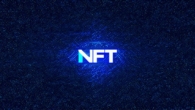
What does NFT mean in the context of cryptocurrency
Non-Fungible Tokens (NFTs) are unique digital assets that are stored on a blockchain. They are essentially a digital representation of ownership or proof of ownership, such as a piece of art or a collectible item. In the world of cryptocurrency, NFTs have emerged as a new way to create and monetize unique digital assets.
In this article, we will explore what NFTs mean in the context of cryptocurrency, how they work, and why they are gaining popularity. We will also discuss some real-life examples of NFTs and their potential impact on various industries, including art, music, and sports.
What is an NFT?

An NFT is a unique digital asset that is stored on a blockchain. Unlike traditional cryptocurrencies, which are fungible (interchangeable with each other), NFTs are non-fungible and have a unique value. This means that each NFT has its own distinct characteristics and can be bought and sold independently.
An NFT is made up of several key components:
- The asset itself – this could be a piece of art, a collectible item, or any other digital asset.
- Metadata – this is the data that describes the asset, such as its title, description, and any other relevant information.
- Smart contracts – these are self-executing programs that define the rules for buying, selling, and transferring ownership of the NFT.
- Blockchain – this is the decentralized ledger where all NFT transactions are recorded.
How do NFTs work?
NFTs are created and sold on a blockchain using smart contracts. These smart contracts define the rules for buying, selling, and transferring ownership of the NFT. They also store information about the NFT, such as its title, description, and any other relevant data.
When someone wants to buy an NFT, they need to make a bid on it using cryptocurrency. The seller then approves or denies the bid, and if it is approved, the NFT is transferred to the buyer’s digital wallet. This process is recorded on the blockchain, providing transparency and security for all parties involved.
Why are NFTs gaining popularity?
NFTs are gaining popularity for several reasons:
- Unique value – each NFT has its own distinct characteristics and can be bought and sold independently, giving it a unique value.
- Ownership proof – NFTs provide ownership proof of digital assets, such as art or collectibles, which can be valuable in many industries.
- Monetization opportunities – NFTs provide new ways for creators to monetize their work and connect with their fans.
- Decentralized marketplace – the blockchain-based marketplace for NFTs is decentralized, making it easier for artists and collectors to buy and sell assets without intermediaries.
Real-life examples of NFTs
There are many real-life examples of NFTs across various industries:
- Art – NFTs have been used to sell unique digital art pieces, such as limited edition prints or interactive installations. One example is the sale of the “Beeple” artwork, which was sold as an NFT for $69 million in 2021.
- Music – NFTs can be used to sell music tracks and other audio files, giving artists a new way to monetize their work. One example is the sale of a track by Grimes as an NFT for over $400,000 in 2021.
- Sports – NFTs have been used to sell collectibles related to sports teams and athletes, such as signed jerseys or game-used equipment. One example is the sale of a LeBron James NFT for $2.3 million in 2021.
The potential impact of NFTs
NFTs have the potential to revolutionize many industries, including art, music, and sports. They provide artists and creators with new ways to monetize their work and connect with their fans. They also provide collectors and investors with unique digital assets that can be valuable in the future.
However, there are also some concerns about NFTs, such as the potential for fraud and market manipulation. It is important for regulators to ensure that the market for NFTs is fair and transparent.
Summary
In conclusion, NFTs are unique digital assets that are stored on a blockchain. They provide ownership proof of digital assets and can be bought and sold independently, giving them a unique value. NFTs are gaining popularity across various industries, including art, music, and sports. While there are some concerns about NFTs, they have the potential to revolutionize many industries and provide new ways for artists and collectors to monetize their work.







